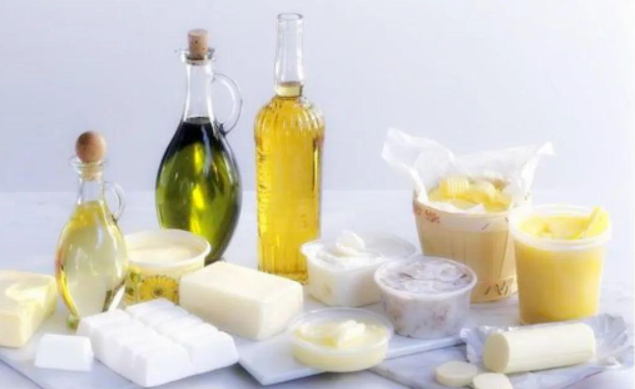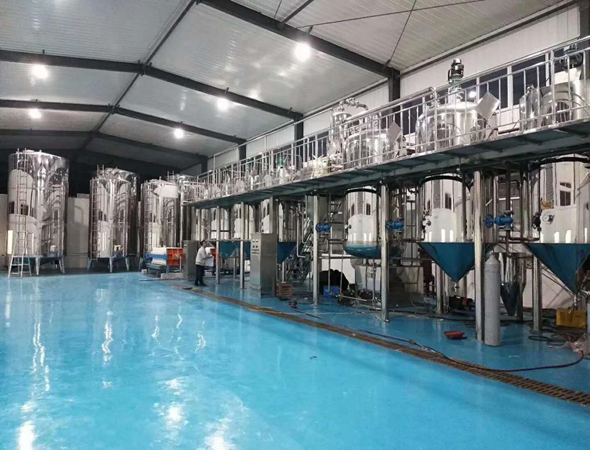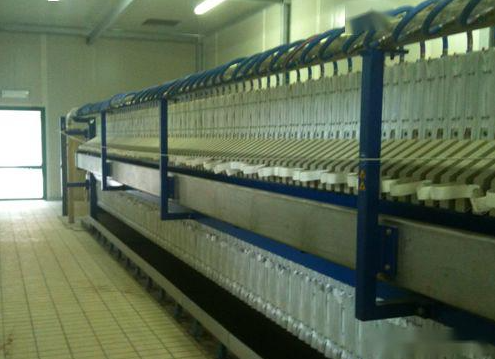Ⅰ. Fat separation
In order to develop the use of natural oils and fats, some fats and oils are modified. Commonly used modification methods include hydrogenation, transesterification and fractionation. Hydrogenation and transesterification are the use of irreversible chemical reactions to change the fatty acid composition of the fat, thereby changing the melting point and plasticity of the fat, so as to improve the use value of the fat. However, chemical catalysts are used in the reaction process, and side reactions (such as the formation of trans fatty acids) are inevitable. Therefore, the special oils produced by these two chemical modification methods often need to be refined so that the modified oils can be edible. In fractionation, the composition of the fat is changed by physical methods, and the fats of different components are selectively separated without any pollution.
At present, the main purposes of separating fats are: First, to develop and utilize solid fats. Generally, high-saturation fats and oils are used to produce shortening, margarine, cocoa butter and other required solid fats. The process produces more solid fats, while liquid oils are relatively small; the second is to use relatively high-unsaturated fats , Through the fractional crystallization at low temperature, the crystallized small amount of solid fat is separated from the liquid oil to produce high-grade salad oil. This method becomes degreasing (that is, winterization) during processing. The liquid oil obtained by fractionation has improved transparency and increased low-temperature storage performance.

Crystal fractionation and winterization, although the same principle, have different purposes. In the winterization process, after the oil is kept at low temperature for a certain period of time, it crystallizes to form relatively coarse crystal grains, which are then filtered to remove a small amount of high melting point glycerides or waxes that usually cause oil turbidity. When the solid fat that needs to be removed is quite small (less than 5%), winterization is often regarded as a step in the oil refining process, and crystallization fractionation is a modified method, which involves changes in the composition of the oil and fractions. The sharp changes in physical properties are mainly used to make special oils for special purposes, such as margarine, shortening and cocoa butter substitutes. At the same time, the cooling crystallization and separation operations must be under very strict control conditions to obtain suitable special grease.
The operation of the fractionation process includes the main steps of cooling oil at a predetermined rate, crystallization of stearin, and filtration and separation. At the beginning of the crystallization cycle, appropriate methods are usually selected according to the requirements of raw materials and products, and input into the logic program control system of the factory, and then a certain amount of refined raw oil is injected into the crystallization tank, and heat exchange with the cooling medium according to the program.
First, melt any components that may interfere with the crystallization process at a higher temperature, and melt the grease that has crystallized in the equipment from the previous batch. Then the controller of the equipment causes the cooling water to flow through the crystallization cooling coil and jacket. During the initial cooling period, the temperature difference between the oil and the coolant should be carefully controlled. During the crystallization period, the slow rotation of the mechanical agitator promotes the heat transfer between the cooling medium and the oil, and the temperature difference changes. When the crystallization enters the mature stage, the stirring can be reduced or stopped. After a proper crystallization period, the membrane filter press or other filter presses are used to separate the stearin crystal components from the liquid oil through oil intake, cake pressing, purging, and pressure relief, and the end of the five procedures. The liquid oil passes through the filter medium, and the solid stearin crystal component is intercepted, and then the stearin crystal falls into the receiver, melts in it, and is pumped into the storage tank.

Ⅱ. Factors affecting fractional extraction
1. Oil varieties and their quality
Different types of oils have different components of triglycerides, and the fatty acid composition of triglycerides is different, and the influence of the process in the preparation and processing of the fats and oils makes the segregation of lipid crystals very different. Palm oil, cottonseed oil, rice bran oil, etc. are cooled and crystallized to easily separate crystals, which are easier to separate. For some fats, such as peanut oil, the crystals obtained by freezing are colloidal crystal bundles and cannot be separated. It can be seen that the feasibility of industrial fractionation firstly depends on the type of oil, that is, the composition of triglycerides.
Certain impurities in natural oils and fats also affect crystallization and separation. The more important ones are:
(1) Gum. The colloidal impurities in the oil may increase the mutual solubility of various triglycerides and the viscosity of the oil, and become a crystallization inhibitor. In addition, colloidal copolymers may be formed at low temperatures, thereby reducing the filterability of lipocrystals. Therefore, the grease must be degummed and adsorbed in advance.
(2) Free fatty acids. Due to the high solubility of free fatty acid in liquid oil, it is easy to form a eutectic with saturated triglycerides, so that partially saturated triglycerides enter the liquid oil with it, which hinders crystallization and reduces the yield of solid fats. . According to research, when the free fatty acid content reaches 7%, it affects the crystallization of oil. However, some people believe that an appropriate amount of free fatty acids acts as a seed crystal and is conducive to fractionation, but this is likely to be for solid fatty acids.
(3) Glycol diester. Most of the glycol diesters in natural oils are intermediate products in the process of synthesizing triglycerides in plants. In the process of fractionation, it can reduce the solid fat index of the oil, can form a eutectic mixture with triglycerides, and can delay the formation of α-lipid crystals and delay the conversion of α-lipid crystals to β'or β type, thereby hindering The growth of fat crystals. It is generally believed that if the content exceeds 6.5%, the crystal resistance effect will be strengthened. It is worth noting that the solubility of glycerides in glycerol triglycerides is large, and it is difficult to remove them.
(4) Glycol monoester. Glyceryl monoester has emulsifying properties and plays a role in hindering the crystallization of solid fat. When the content exceeds 2%, it hinders the formation of crystal nuclei. In addition, when polar solvents (such as acetone, isopropanol) are used for fractionation, monoglycerides have the effect of dispersing water, which reduces the polarity of the solvent, which in turn affects the separation efficiency. Glyceryl monoester is more active, and its content can be reduced by alkali refining or physical refining.
(5) Peroxide. Peroxide will not only reduce the solid fat index of the fat, but also increase the viscosity of the fat, which has a negative effect on crystallization and separation.
2. Crystallization temperature and cooling rate
In the process of fractionation, because the three hydrocarbon groups in the triglyceride molecule are long, there will be serious supercooling and supersaturation during crystallization, and the crystallization temperature is often much lower than the freezing point of the solid fat. During the entire crystallization process, the trisaturated fatty acids with high melting points in the oil crystallize first, followed by monounsaturated, diunsaturated and other fusible components, and finally reach phase equilibrium. This equilibrium is mainly based on external cooling conditions and Depending on the relevant characteristics of the crystal. If the degree of undercooling is too large, many crystal nuclei will be formed at the same time, which will increase the viscosity of the entire system and make it difficult for molecules to move and hinder the growth of crystals. When the fat is gradually cooled and the number of crystal nuclei formed from the supersaturated solution is small, stable crystals containing less liquid can be formed in a relatively short period of time. It can be seen that the crystallization temperature is closely related to the fractionation effect. Different fractionation processes and different crystallization temperatures have corresponding fractionation effects.
The obtaining of the most stable crystal form of a certain grease is determined by the cooling rate and crystallization temperature. Extremely rapid cooling with excessive temperature difference is likely to form an inseparable vitreous body. Slowly cooling to a certain crystallization temperature can obtain the corresponding crystal form.
The cooling rate depends on the temperature difference between the cooling medium and the grease and the heat transfer area. Excessive temperature difference will form nucleus scale on the surface of the heat exchanger, affecting heat transfer and delaying the process of fractionation. In order to ensure the cooling rate under the premise of a small temperature difference, the heat exchange area of the crystallization tower is generally designed to be larger.
The cooling rate is also related to the process, and the cooling rate of solvent fractionation can be higher than that of conventional fractionation methods. For example, when solvent fractionation is used to extract palm oil, the cooling rate can be increased to more than 3-5°C/h. The composition of the high melting point components in various greases is different, and the characteristics of the crystals are different, which results in the difference in the crystallization temperature and cooling rate. The suitable crystallization temperature and cooling rate of a certain oil requires the cooling curve and the cooling curve obtained through experiments. The solid fat content curve is determined by the functional relationship shown in the curve.

3. Crystallization time
Because the fatty acid carbon chain in the triglyceride molecule is long, there is supercooling during crystallization, and the viscosity at low temperature is large, so the degree of freedom is small, the speed of forming a certain crystal lattice is slow, and the transformation between crystal forms is achieved. Sufficient time is required to stabilize the crystal form. Natural oils have complex components, and each system has its corresponding solubility at a certain temperature. Therefore, the time required for the crystallization of a certain oil to reach equilibrium is more difficult to predict.
The crystallization time of the solid fat is related to the system viscosity, polymorphism, the properties of a certain saturated or unsaturated triglyceride to form a stable crystal form, the cooling rate and the different speeds to reach equilibrium, and it is also affected by the design of the crystallization tower structure. direct impact. The time for a certain oil to reach crystalline phase equilibrium in a certain structure of crystallization tower needs to be determined through experiments.
4. Stirring speed
Using a static crystallization tank, relying on diffusion and heat transfer, the cooling rate is slower and the time is longer. If a crystallization tank with stirring is used, the heat transfer speed can be accelerated, and the oil temperature and the uniform state of the components can be maintained, so the crystallization speed can be greatly accelerated. If the stirring is not enough, local crystal nuclei will be produced, but if the stirring is too vigorous, the crystals will be shredded, which will make the filtration difficult, which is even more unfavorable. Therefore, the appropriate stirring speed should be controlled, generally about 10r/min.
In the actual production process, it is thought that stirring is used in the process of crystal nucleation, and stirring is not necessary in the process of crystal growth. However, it is generally believed that it is better to use stirring in the whole process. It is also believed that the stirring speed is related to the crystallization temperature. Increasing the stirring speed and controlling a lower crystallization temperature can also obtain the same good degreasing effect. However, because it requires more energy and is not economically cost-effective, it is generally believed that lower stirring should be used Speed and higher crystallization temperature.
5. Adjuvant
The role of the solvent in the fractionation is to dilute, which not only reduces the viscosity, but also increases the ratio of the liquid phase in the system, which increases the degree of freedom of the highly saturated triglycerides, accelerates the growth of lipid crystals and accelerates the transition to stable crystals. , Which is beneficial to obtain crystals that are easy to filter. In addition, the obtained solid fat contains less liquid oil, and the separated liquid oil has a relatively low cloud point, which effectively improves the separation effect.
The solvents used in fractionation are polar and non-polar. Different solvents should match the corresponding operating conditions. For example, non-polar solvents have high solubility for grease. Therefore, compared with other solvents, the crystallization temperature needs to be lower, and the crystal growth time should be appropriately extended. The solvent ratio affects the separation effect and cost, and a comprehensive balance is required in the operation.
The lipid crystal obtained in the fractionation is a porous substance, and a certain amount of liquid oil is adsorbed on the pores and surface. The conventional fractionation method cannot separate this part of the liquid oil. When a surfactant is added to the lipid crystal-oil mixture When the lipocrystals change from hydrophobic to hydrophilic and move to the water phase, the liquid oil on the pores and surface of the lipocrystals can also be separated from the crystals directly or due to the wetting of capillary action, thereby improving the separation effect. The surfactant used in the fractionation process requires that the structure of the water-repellent agent be similar to that of the solid fat, and the O/W system must be prevented from reversing during operation. Therefore, when applying surfactants, electrolyte additives must be added.
In the crystallization stage, crystallization accelerators, such as hydroxystearate, solid fat, etc., are added to induce crystal nuclei and promote crystal growth. Adding non-lipid solid fine particles, such as diatomaceous earth, has a filter-aid effect in addition to the above-mentioned effects.
6. Conveying and separating method
The lipid crystals formed by freezing are only the product of the difference in the melting point of triglycerides, and their structural strength is limited and cannot withstand high shear and pressure. Therefore, it is best to avoid turbulent shearing during the transportation process, and it is best to use vacuum suction filtration or compressed air transportation.

The filtration pressure should not be too high. It is best to filter by gravity for about 1h at the beginning, without pressure, and then slowly filter with pressure. Finally, the highest pressure does not easily exceed 0.2MPa. Otherwise, the crystalline pressure will easily block the pores of the filter cloth and cause filtration. difficult. In order to improve the filtration speed, 0.1% filter aid can be added, so that the filtration speed can be increased by about 4 times.
Copyright © Henan Zhongxing Grain And Oil Machinery Co.,Ltd. All Rights Reserved. Powered by MetInfo